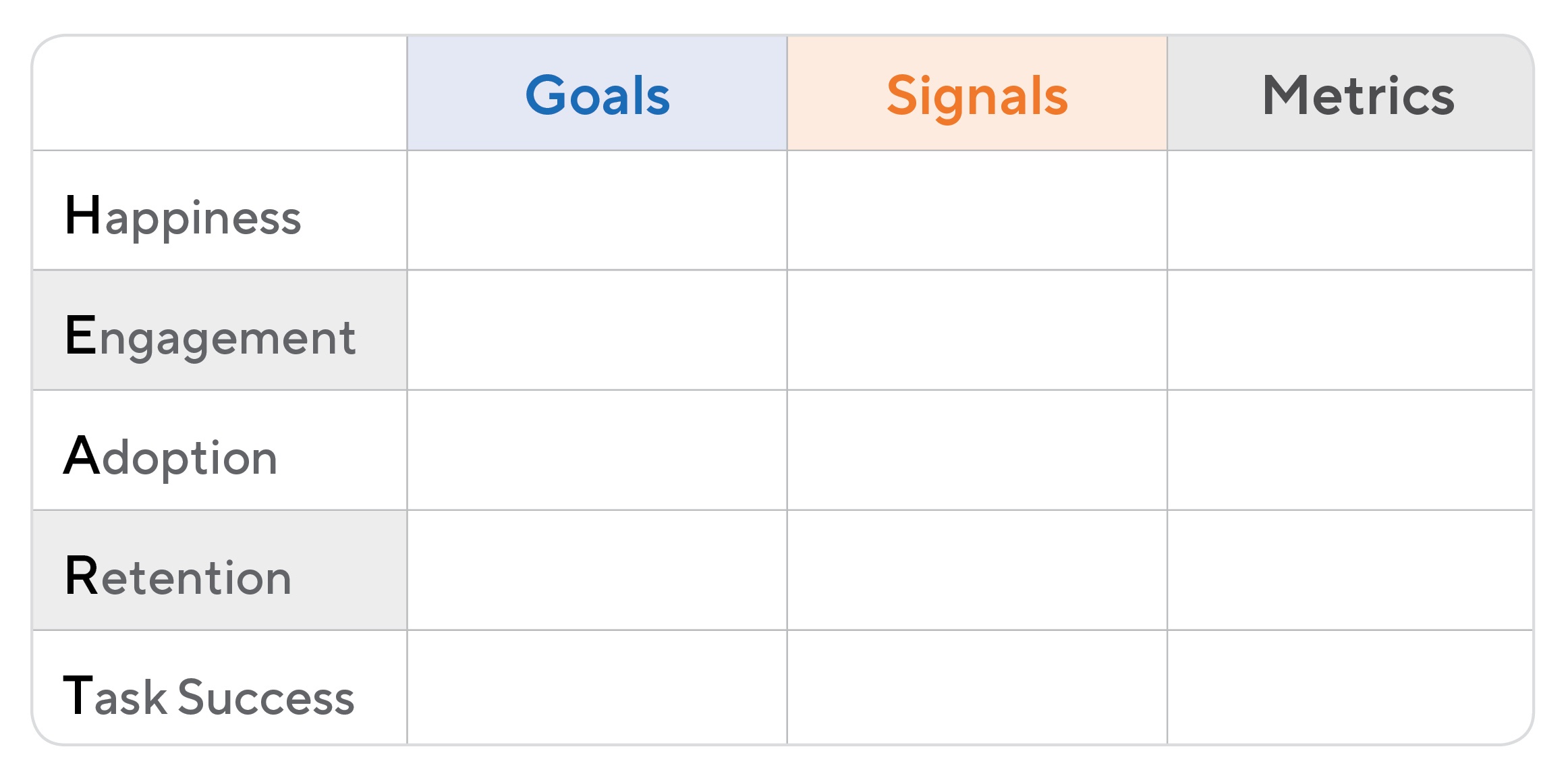Need help prioritizing the many features and other initiatives competing for space on your product roadmap? One way to make better product decisions is to borrow a framework developed by Google. Google originally created the HEART framework to help its UX teams improve users’ experience with Google products.
But, product managers can get as much benefit out of the HEART framework as UX designers have. In this post, we’ll explain how.
What is Google’s HEART framework?
Google’s HEART framework evaluates a product or feature idea according to five user-centric categories.
These categories include:
- Happiness
- Engagement
- Adoption
- Retention
- Task success.
Together, they form the acronym HEART. Note: Not every category will apply to every project, so you won’t always use all five.
To quantitatively measure these categories, you’ll use the Goals-Signals-Metrics approach Google also developed. This involves setting goals, defining signals to find out if you’re making progress, and establishing metrics to determine if you’re meeting your goals.

How Google’s HEART Framework is Used
Google designed the HEART framework to help its UX designers focus on only a handful of key user experience measurements.
The framework’s creators understood that the many types of usage data flowing in at all times can overwhelm designers. They also learned their teams didn’t have a systematic way to measure user experience. So they developed a framework to help their UX teams narrow their focus to a small set of easy-to-understand metrics.
UX teams use Google’s HEART framework to define user experience goals and measure how changes to a feature or product affect users.
Also, as Ty Magnin of UiPath puts it, HEART “pins the discipline of user experience to revenue-driving metrics.” That’s a connection Magnin says he had trouble making with other prioritization frameworks. And a useful connection to have when making product decisions.
How PMs Can Use HEART to Make Product Decisions
Who says product managers can’t also use the HEART framework to make product decisions? After all, UX is part of the product.
Here are 2 ways product managers can use the HEART framework:
1. Weigh competing initiatives against each other according to HEART’s five categories.
One way Product Managers can use HEART to make product decisions is to assign scores in all relevant categories to every feature under consideration by your team. Remember, some of these categories might not apply to a specific feature or project.
With this hack, you won’t be using HEART to measure actual results of a feature your team has already pushed live to users. Instead, you will only be using these user-centric metrics to help figure out which features have the greatest chance of delivering value.
In our product roadmap app, you can use the Planning Board to customize your own feature-scoring criteria using the HEART categories. For example, will the increased adoption promised by one feature outweigh the value of another, which could help you keep customers longer? Which offers the best chance of meeting your goals: a feature that boosts customer happiness or one that increases engagement? Throw the HEART metrics into your weighted-scoring app and find out.
2. Monitor the results of your HEART metrics over time to help you make better product decisions in the future.
Product managers can also use the HEART framework exactly as Google intended for its UX teams. In other words, for all features competing for space on your roadmap, follow the steps in this framework as UX designers do.
Goals, Signals, Metrics, and HEART
First, define goals for each of the five categories relevant to your initiative. Decide how you want to increase customer happiness, for example, and how you hope to boost adoption rates.
Then, figure out which signals you’ll look for in each of these categories. Defining your signals will help you get a sense of whether or not you’re making progress toward your goals. For example, when it comes to engagement, maybe one positive signal could be the average time on your website’s page or in your app increases.
Finally, establish a few metrics (at most) to track over time that will tell you if you are achieving the goals you’ve set for your feature, your product, or your business.
Over time, you’ll check in with your HEART categories to learn which areas of the product are resonating with users. Then, you can use that information to make better decisions about how to focus resources to continue improving the product.

Takeaways: The HEART framework is just one tool in the product manager’s toolbox
Google’s HEART framework is just one of over 37 product management frameworks out there. However, when it comes to certain initiatives, and depending on your product team’s culture, you might find more success using the value vs. complexity prioritization model or the buy-a-feature prioritization framework. You might even prefer a different framework developed by Google, the Objectives and Key Results (OKR) model for prioritizing features.
But when you want to weigh initiatives based on how much they’ll improve your users’ experience, the Google HEART framework can help.
It’s important to keep in mind that no framework can in and of itself give you guarantees that you’re focusing on the right initiatives. You’ll need to supplement the information you derive from your HEART framework results with data from other sources, your own market research, and of course common sense. But using a framework like HEART can serve as a great jumping-off point for difficult product decisions.



